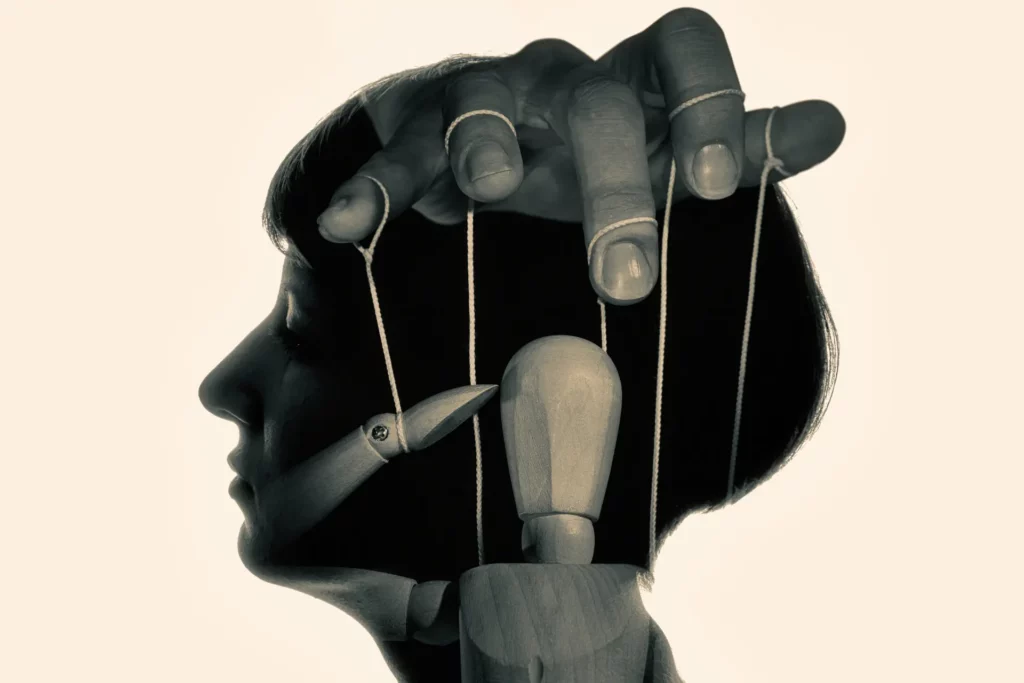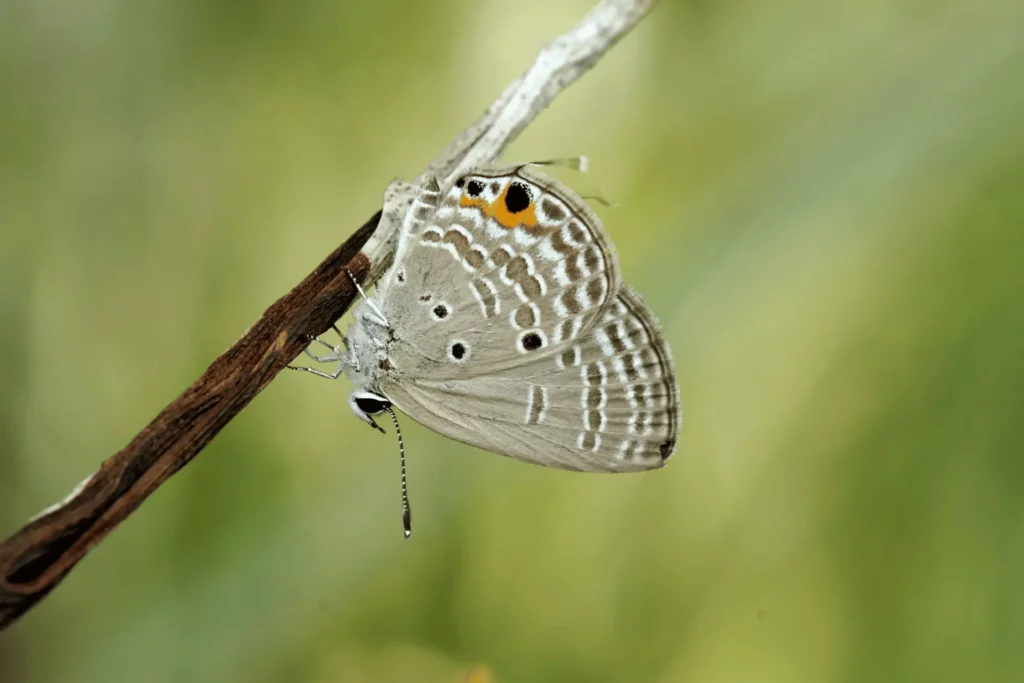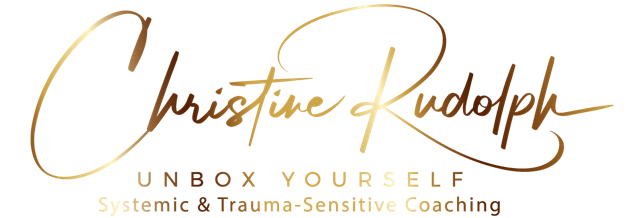Contents
- Violence is inherited and passed on
- Depression or rebellion
- Violence in everyday life
- Violence is the emergency call button
- The role of the ego
- Power, fear and control in the social system: victim-perpetrator dynamics per excellence
- Love. The only answer
- Nonviolence – from the wisdom of yoga
- Butterflies are made in the wild – in freedom
Whether I’m scrolling through my social media feeds, watching the news or talking to people, violence is the order of the day – and for many people it has already become “normal”. “That’s just the way it is”. It seems as if the virtual world itself – a kind of pseudo-closeness, but also great anonymity – increases the propensity for violence. Violence refers to many different things: first and foremost, I mean psychological violence and manipulation, which are obviously at their peak.
Society and the way we treat each other – fundamentally and, of course, differently in different countries – has fallen ill worldwide – has come apart at the seams. The big system has become ill – and the illness is progressing because the wrong means are being chosen to cure it.
Do we even want to “cure” it? Or is it perhaps even profitable in this system for people to fight each other and be afraid?
Now you could say that violence has always existed: a few crazy people who were violent. That’s certainly true, but it’s not as simple as that. Or: it actually is simple. But it’s too superficial. Where does violence even come from? And what is the principle of non-violence?
Violence is inherited and passed on
Imagine children playing freely and being happy. No matter where they are in the world. They are having fun and everything is wonderful. They unfold – literally, like a beautiful butterfly. Each child has their own preferences. One likes to draw, the other to sing, the third to dance. And they express themselves.
And suddenly – there’s a ban: the child is no longer allowed to dance or paint. Instead, they have to do boring things. And if it doesn’t, there are punishments. If this goes on for a long time, the little one becomes more and more frustrated. It probably won’t show its frustration any more, because then punishments will follow again.
The beautiful, colourful butterfly… will eventually become a monotonous and uncoloured butterfly. Grey. Like all other butterflies.
The little creature – it adapts (this is called conditioning). And does boring things. And inside… it is one thing: angry! And behind the anger is sadness.
It thinks to itself: When I grow up, I’ll do all the nice colourful things…!
And then it is big. Colourful? Not a chance. The planned career is not colourful. It follows a path. And woe betide you if you veer off! Then it’s over! With the career.
Or imagine the children are playing – and every child has its own favourite and creativity: dancing, singing, painting. And now someone comes along and tells the child that dancing and painting are completely wrong and that these people with these preferences must be hated and fought against. The child will be sceptical at first, but then – because everyone else thinks the same – will join in. The former friends become enemies. Because they are different. They love to paint. And to dance. Now they are socially marginalised.
Unless they adapt. And sing now. Then they may not like it, but they have no other choice. They want to belong. A basic human need.

Depression or rebellion
I often have people like this in my practice. Depressed. Sad. “Everything’s fine” – often comes too. With the follow-up: “Must be.” The anger – has been pushed away – because IT MUST NOT BE! It’s the social disaster. Just like it wasn’t before.
Or, but these are people who are very courageous (but no less sensitive) – people go – unconsciously – down a different path: that of rebellion. They become the “black sheep” in the family. In society. They simply do things differently. They dare. But perhaps they go even further: they turn to violence. The suppressed anger makes itself heard. Usually in an inappropriate context. Perhaps even criminally.
Violence is the last refuge of the incompetent.
Isaac Asimov
Violence in everyday life
I would like to translate “incapable” here as “knowing no other strategy”. So if we are stressed by a situation that is too much for us, we instinctively fall back on familiar strategies. We often think we are not violent ourselves – and then we shout at our partner. Or the child. That too is violence. It is – our learnt strategy under stress.
What else counts as violence?
The faces of violence
- Shout at someone
- Making accusations
- Insults
- Threats
- “Putting someone down” or making derogatory judgements
- Social exclusion in any form
- Passive-aggressive behaviour (silent treatment / ghosting / derisive comments / sarcasm)
- Manipulation
- Bossing
- Bullying
- Benching
All of this… is violence. And to the highest degree! Do you realise that?
So why do people do it?
The first answer is: because they have learnt no other way. Perhaps they have been taught to do it this way. And it has been passed down through generations (quasi: if I am manipulative, then I will achieve my goal) or there is an underlying trauma that people have had to deal with – and have developed strategies to “calm” their nervous system again (if I shout around, the others are quiet – and I have control – and power!). These traumas are also unconsciously passed on to the next generation.
If you don’t stop this wheel yourself, violence (conscious and unconscious) goes on and on…
If someone uses violence, they usually don’t know how else to help themselves – ultimately it is a cry for help. A “Please see me” and a cry for acceptance and love. Violence usually has something to do with power. Healthy ways of expressing one’s own “power” are, for example, when someone can express their inner being: an artist paints, for example. Then he is in harmony with himself. His nervous system is in control. He is accepted. A part of society. This calms our nervous system immensely.
If this person’s “self-power” has been taken away – then it now creates (unhealthy) space for itself. This person – his entire system – is in distress. It must (re)establish control. If necessary, by force. A vicious circle.

The role of the ego
The ego – the part of us that enables us to perceive ourselves as independent individuals – literally outgrows itself when we think we are ‘better’ than others. As a result, we separate ourselves from everything else – and also from ourselves. We become our ego – away from the “all is one” concept and away from the “we together”.
The big issue and – in my view – a glaring problem – socially speaking – is the (patriarchal) system, which is very much geared towards power and control. Fear is a wonderful tool to make people “function”. Fear – the opposite of love – is a powerful tool. Of course, there are always two sides to this: the fear that people already carry within them (from wounds, traumas and very archaic fears experienced as human beings) and the fear that is additionally fuelled.
In this way, a further layer of fear or even (re)traumatised situations are added on top of one’s own basic fears and perhaps experienced wounds.
For example, the threat as a fear-inducing moment: “If you don’t…, then…” Of course, such a statement is scary at first. It is important to recognise that it is highly manipulative (= violent).
If people have not looked at and worked on their own and very individual fear programmes, a) these people either become “perpetrators” themselves by spreading fear (and thus distracting from their own fear) or b) become “victims”: the external fear programmes take hold.
Acting out of fear is always acting under duress. Always unfree. It is dangerous when we do not even realise this ourselves. Because then… fear-inducing things simply have the upper hand.

Love. The only answer
People who love life are not full of violence. People who work on their issues, who constantly reflect on themselves, are not violent. Because one aspect is very important to them: love.
They may also have fears. But they are aware of them. And: they have reflected on them. Because life basically consists of these two polarities: Fear or love.
The first love is love for yourself.
Love for yourself
When you love yourself, you don’t cannibalise yourself. You don’t overexploit yourself – with alcohol abuse, too much sport, too much xyz. All of this – this “too much” is ultimately a means of pushing away fear, of not feeling emotions. But do people realise this at the time? Probably not.
Love for all things, animals and nature
Someone who loves does not throw paper on the grass or throw empty bottles into nature or poison animals.
Love for life
Someone who is a lover rejoices in nature, in life, in blooming flowers, in singing birds, in blue skies, in rain, in the smell of fresh grass, in a fine cup of coffee…
Love is liveliness
Fear is rigidity. Corset. I like to use the term box. A square something that sets your artificial boundaries. No wings can grow here.
Nonviolence – from the wisdom of yoga
Non-violence – ahimsa – is the first concept of the so-called yamas from the 8-step path of yoga (Patanjali’s Yoga Sutra). Yamas contain the principles of how people deal with their environment. And this principle includes non-violence, right at the top of the list.
Ahimsa as a principle describes the interconnectedness of everything. Nature, people, companies, families. Everything is connected to everything else. This becomes particularly clear when you are by the sea: one drop of water is also the entire sea (= many drops). And a grain of sand is the entire beach (= many grains).
It has an effect on me when someone smiles. On the street, just like that. It’s a completely different day than when everyone is walking around grumpily. The principle from I (ego) to we (what can I contribute to the whole and make the world a better place?). If I ask myself these questions every day or if I have absorbed them so that I automatically act accordingly, then I am not violent – I can’t be, because it protects beings and things, whether animals, plants or humans – or “things”.

Butterflies are made in the wild – in freedom
Living without violence: Is that even possible? After all, we all get annoyed at times, get louder – or an aggressive word slips out. And we probably unintentionally step on ants – living creatures – very often, for example. Does that make us violent?
Our intention decides. The question is: What drives me? What intention makes me act?
If I want to be authentic and loving with a clear conscience (= intention), then I apologise to the other person and say which of my own feelings was the reason for my violent reaction. This allows me to give space and start a conversation (instead of fighting).
If I take a knife – and I am a doctor – I am most likely acting with the intention of helping someone. A person who wants to harm other people with a knife has a completely different intention.
This is also the case in a relationship: do I punish the other person with ghosting or silent treatment (both highly manipulative and in the child ego) after an argument? Or can we find a level for a conversation?
How do I deal with bullying in a company? As CEO, do I let it happen according to the motto: “It will sort itself out”? Is that the corporate culture I want? Or do I find a way of loving cooperation at company level?
An incredible amount of violence happens every day. But what we generally see as violent (murder, manslaughter, etc.) is not “everything”. Violence goes much deeper and is present at all times: verbal abuse on social media, gossiping behind colleagues’ backs, ghosting by a potential partner, bullying as a company culture, bossing as an ego booster, silent treatment after an argument – for weeks on end… and the list goes on.
So what is your real, true, unadulterated intention – every day, every minute?
Only then – with the realisation of this – and personal self-reflection – only then… non-violence is possible. With awareness, the intention of love, the reflection of one’s own fears.
From the inside out. Always.
If you like, I will accompany you. Book an appointment here to get to know me.
I look forward to meeting you.
Christine


